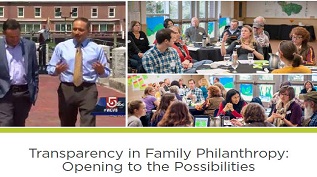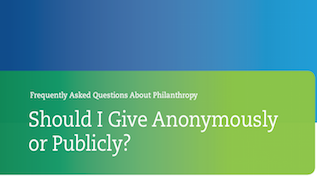
Modesty may make some families reticent, but others point to the potential for good in the family name and reputation. Many families have learned to take explicit advantage of what can be a useful grantmaking tool. The family name can garner respect, or at least attention. It can act as an imprimatur of sorts, particularly when the family encourages grantees to let others know they fund them. This NCFP Content Collection provides context for new donors considering how public to be with their grantmaking, management and operations, and provides ideas for existing foundations and boards contemplating this question.
Tip: Check out the Policy Central: Grantmaking and Strategy collection for sample Publicity and Recognition policies.
Transparency in Family Philanthropy: Opening to the Possibilities


Transparency Case Study: Bush Foundation
Blog Post
Transparency Case Study: The Russell Family Foundation
Blog Post
Transparency Case Study: Barr Foundation
Blog PostGiving Publicly vs. Giving Anonymously

Should I Give Anonymously or Publicly?
Article
What is my giving style? Two considerations: Visibility & Impact
ReportAdditional Views on Transparency and Anonymity

10 general guidelines for greater foundation transparency
Article
